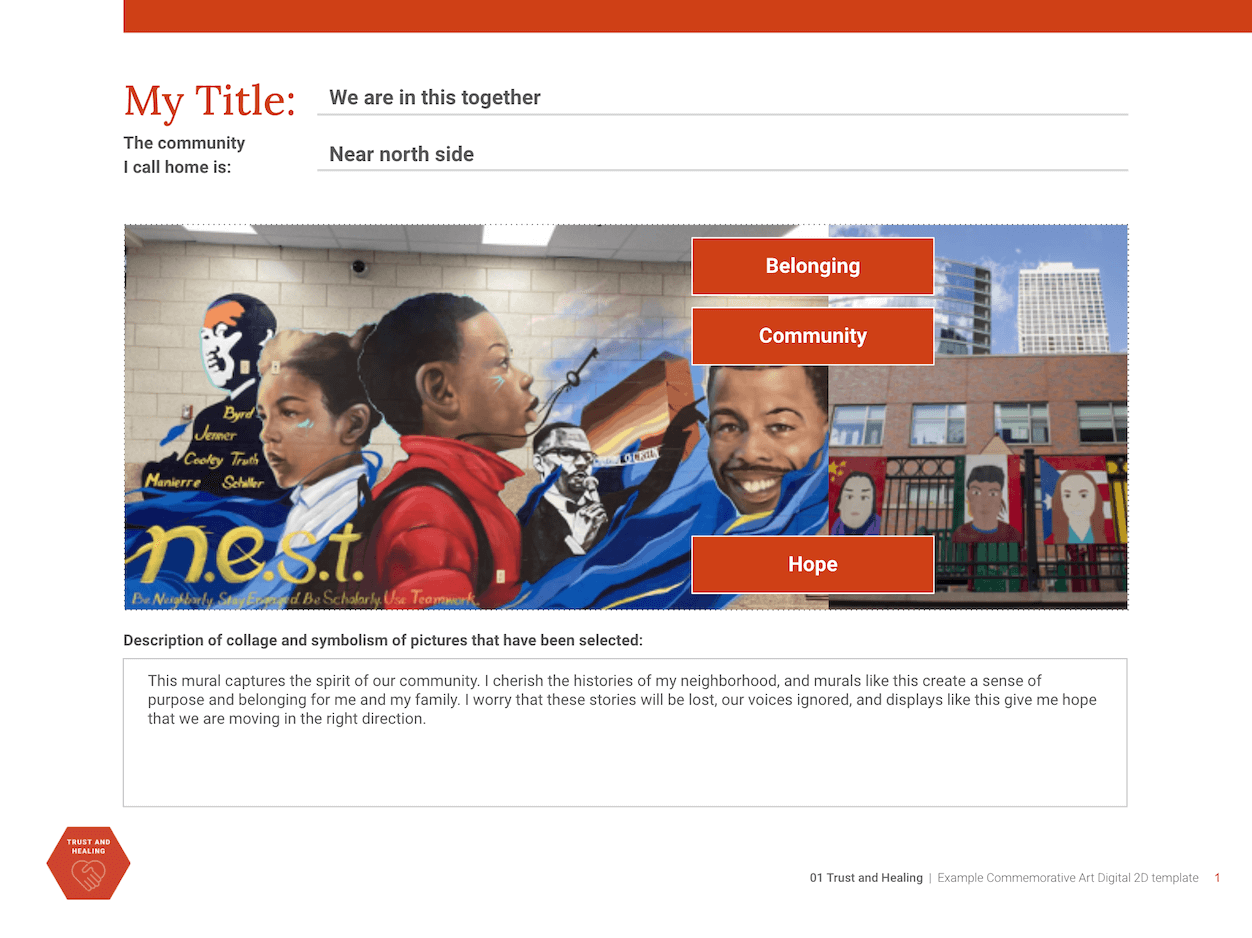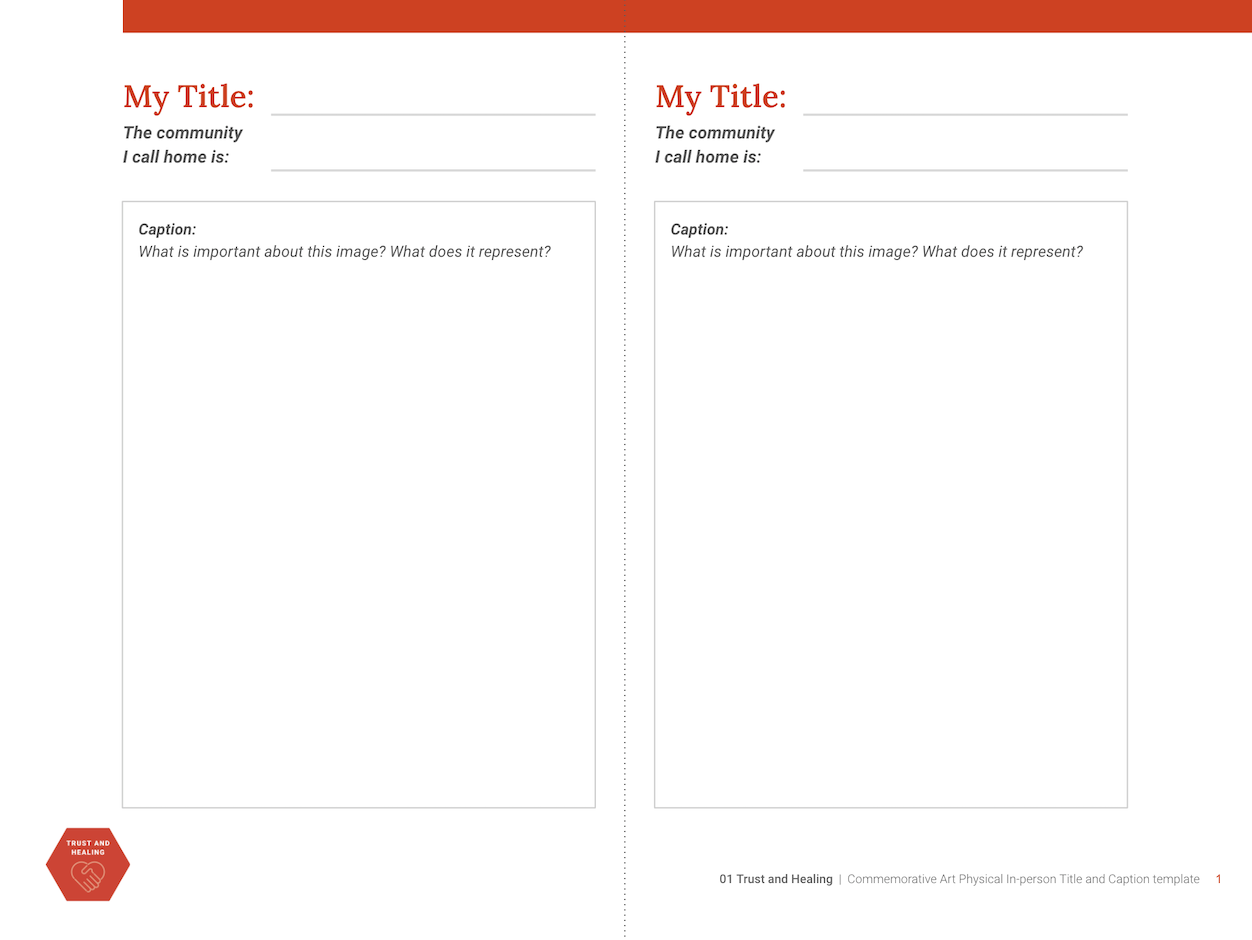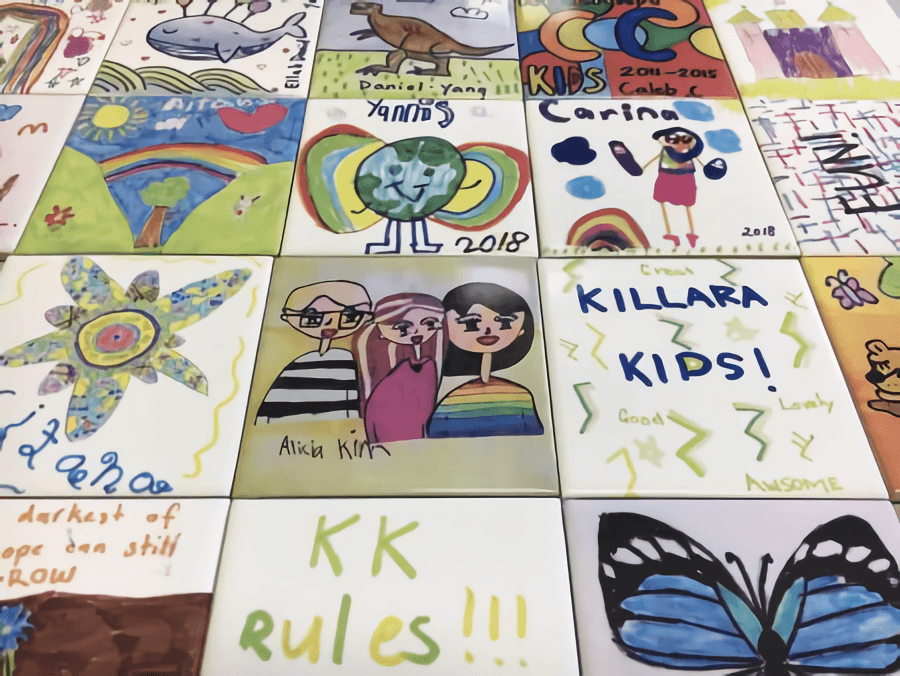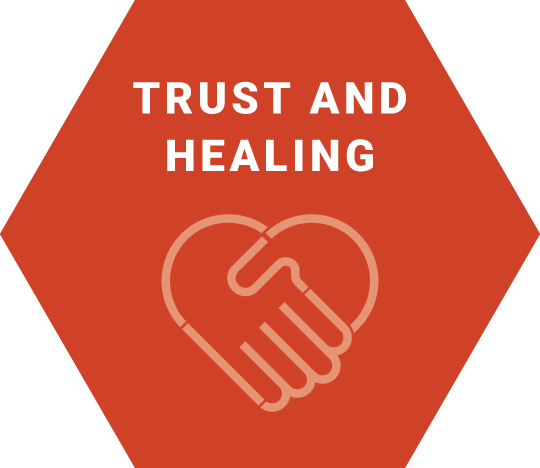
What is the purpose of Trust and Healing?
Building trust and offering space for healing conversations will allow a foundation for more effective community planning and engagement.
The activities in this module can help create safe spaces for community members, parents, teachers, students, and staff members to share their voice, address past experiences, and move together toward healing. These tools help welcome these conversations, and share tactics for creating openness, transparency, and community-wide conversation.
Why is it important?
In order to dream together as a community, it is helpful to invite community members to share their experiences while acknowledging past trauma. The methods in this module are important in building trust by empowering communities to shape their future.
Methods
Deep Listening
A framework for practicing mindful listening
Overview
Mindful listening is the act of listening intently without listening for anything specific. You are present with your whole body, mind and heart to truly hear, understand and internalize what the other person is saying. Typically, when others are speaking, we divide our attention between what they are saying and what we want to say next. This inhibits our ability to understand their perspectives and may reduce their comfort or desire to be vulnerable and share intimate thoughts and feelings.
You can help to lay the groundwork for continued dialogue, openness, and collaboration by listening with undivided attention and care. Remember, building trust starts with listening. By doing this activity you can practice mindful listening, and over time, build and strengthen your capacity to more naturally create safe spaces for dialogue, brainstorming or planning together.
This activity is a paired exercise to help you practice the art of mindful listening using the Ting Framework. The Ting Framework can help you prepare your mind, heart and body for listening deeply. Simply put, Ting applies the concepts of Eastern mindfulness and meditation to listening. Ting is the name of the Chinese character that means "to listen.” It is made up of multiple characters that constitute its meaning.
The Ting Framework consists of six dimensions of listening, each of them being represented in the character itself
- Using the Ears: To hear everything that is said.
- Using the Mind: To process what is being said.
- Using the Eyes: To see nonverbal communication.
- Using the Heart: To empathize and relate to what is heard.
- Practicing Focus: To use the whole mind to listen.
- Practicing Reverence: To respect those speaking as if they were royalty
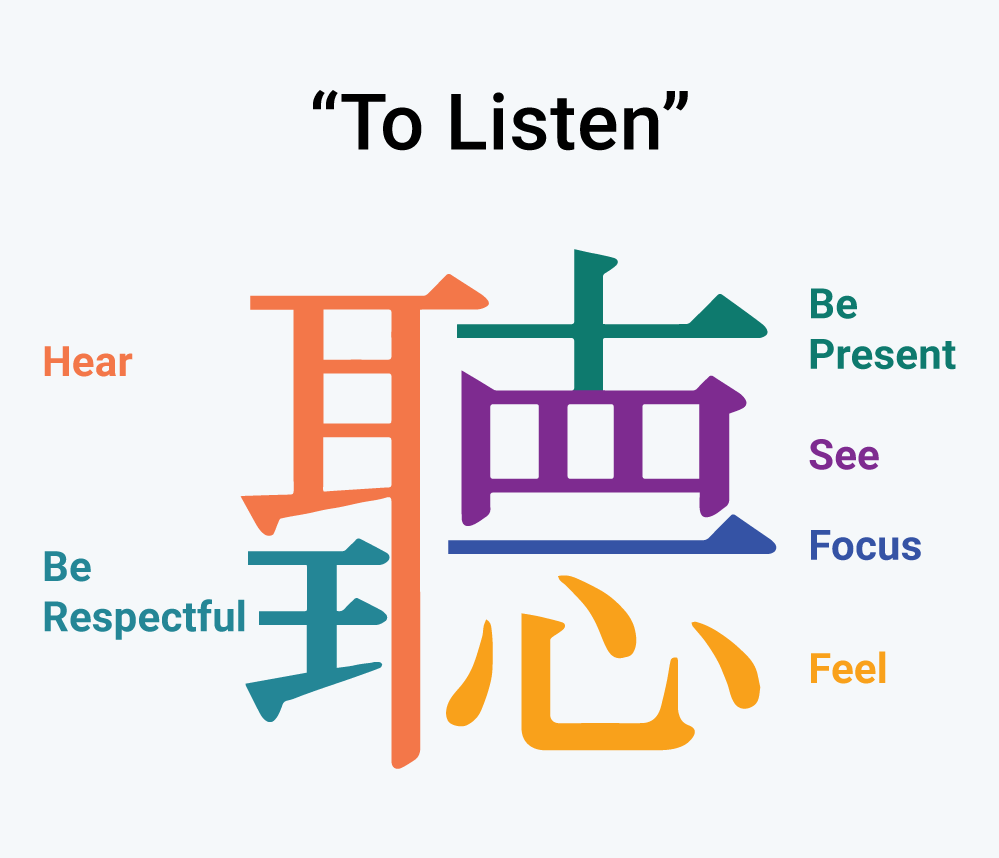
To deeply listen, you should try to utilize all six of the dimensions at once. The fifth dimension is particularly difficult, as most of us are accustomed to listening for the purpose of responding, which gives our mind the competing goals of listening and formulating a response. Using this framework, you can practice consciously focusing your entire body on another person.
Use the Deep Listening worksheet to help you conduct this exercise.
To conduct the exercise:
This exercise is best done multiple times over a period of time so that you can consciously work to change the way you listen and focus on those around you. With practice, this will become easier and help you create safe spaces for dialogue.
This skill will help you conduct the methods in many of the other modules, and you can refer to the Listening module for additional recommendations and methods for listening to others.
Story Circles
A forum for sharing stories and experiences, listening deeply, and opening the floor to honest reflection
Overview
Story circles provide a chance for community members to voice and share their lived experiences and to unearth what people are feeling. We modeled this activity from “The Story Circle” method by Roadside Theater. In a Story Circle, you listen intensely and meditatively. Its value comes from having people share their own unique and true perspectives. It is a time preserved for people to share their personal stories in a place of deep listening, compassion and curiosity.
This method is not intended for coming up with ideas or solutions to challenges.
How to facilitate a Story Circle
Planning
Facilitation
Story Circles May Help You:
- Seek acknowledgement of the trauma experienced in the past.
- Signal that all voices are important to the decision making process.
- Uncover details of the lived experiences of community members often overlooked, hidden, or forgotten.
- Cultivate rapport and trust among the community.
- Provide input for future community engagements.
- Build connections between stakeholders.
- Identify community advocates who may be willing to continue engaging in future parts of the project.
Risk of Not Doing This:
- You may not find a way for deeply held experiences to be shared, understood, acknowledged and addressed. This can be a barrier to future engagement and the ultimate success of co-creation efforts.
- Issues of the community may not get unearthed, and the project team may carry on without full knowledge of the context.
- The community may not develop a reliable, repeatable structure for sharing feedback, airing grievances, and acknowledgement of past histories and trauma.
- If vulnerability and empathy are not modeled and practiced, they are less likely to be integrated into future actions.
- Collaboration with people outside of the community may become harder due to lack of trust.
What May Come Next?
Bring this same group back together to work your way through other module work towards addressing the project at hand.
Do's
- Maintain the focus of the session on thoughtful speaking and deep listening.
- Keep everything confidential, except for shared agreement on learnings or stories that may be shared.
- Be mindful of the energy in the room and give pause whenever needed. These stories may be painful for members to relive, and some may be at odds with others in their experiences.
- Remember, each story is a gift. Treat the people and their stories with care.
- Thank the group for coming, for being honest, and seeking shared resolution.
Dont's
- Do not use this as a time for opinionated discussion.
- Do not interrupt stories or let others interrupt.
- Do not use this as a time to correct or explain. This is about sharing a lived experience. The guests are the experts of their experience. Keep track of these moments silently, and use these different opinions to help your team determine opportunities to improve the process, relationships, and future outcomes.
- Do not treat this conversation as a “product”. Treat it as a genuine connection point among people seeking to understand each other.
- Do not limit your invitee list to those who already trust you. Exercises like this foster authentic conversation and connection among all community members.
Community Commemorative Art
A collaborative art project that embodies the soul, spirit or memories of a group or community
Overview
“The best community art preserves memories and encourages both interaction and stewardship.”
“The art of building community - Public Mosaic Projects Bring it All Together”
Like a mosaic, this method aims to facilitate the creation of "something made up of different things that together form a pattern" and provide a vehicle for sharing stories, unearthing emotions, and cultivating solidarity and a shared sense of pride. By making art, we hope to heal, strengthen bonds, and create a living artifact to tell the story of those who live and learn in this city, and its respective communities. These events, and the end product, may help create a collective self-esteem that reinforces the identity and connectedness of the group.
There are many ways to create shared art, and this method will outline one possible way to do this. For more ideas, search online for ideas such as domino art, co-created murals, and community mosaics.
How to facilitate Community Commemorative Art
Planning
Set up
Facilitation
Follow up
For virtual sessions, save the worksheets as a PDF and email it to the participants. You can also share on the school or CPS websites if you have received permission from the participants.
For physical displays, install the art project as agreed to meet the expectations and commitments of the group.
After the art has been uploaded or installed, email the participants so that they can view or share this work with their family, friends, and neighbors.
Sources of Inspiration
Example A: Community Tile Art
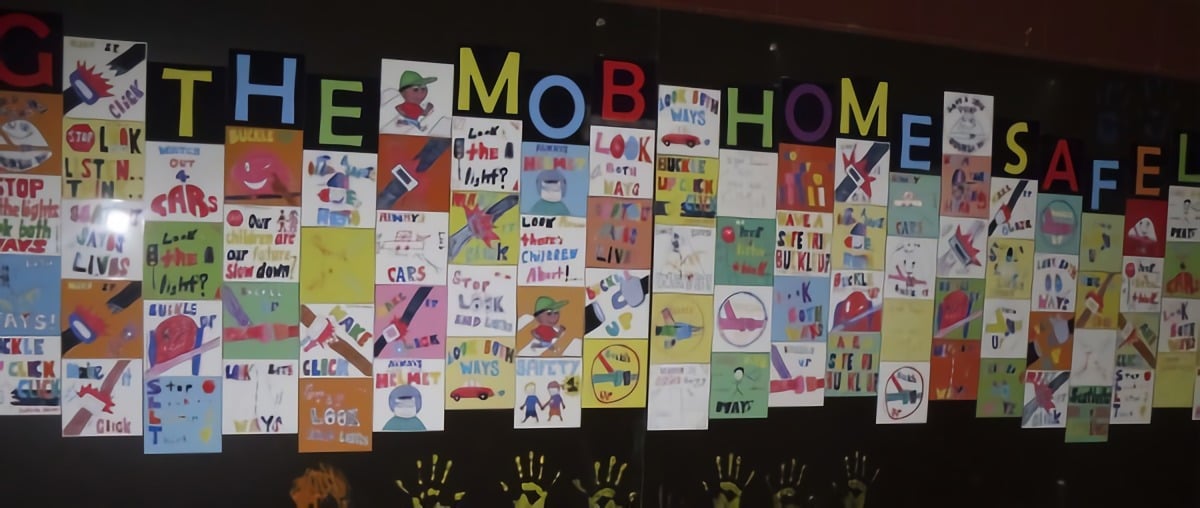
Tiles can be drawn or painted on to express a message, display a symbol, and reflect the community voice. (source: https://jennoliart.com.au/commemorating-in-style/)
Example B: Community Puzzle Project
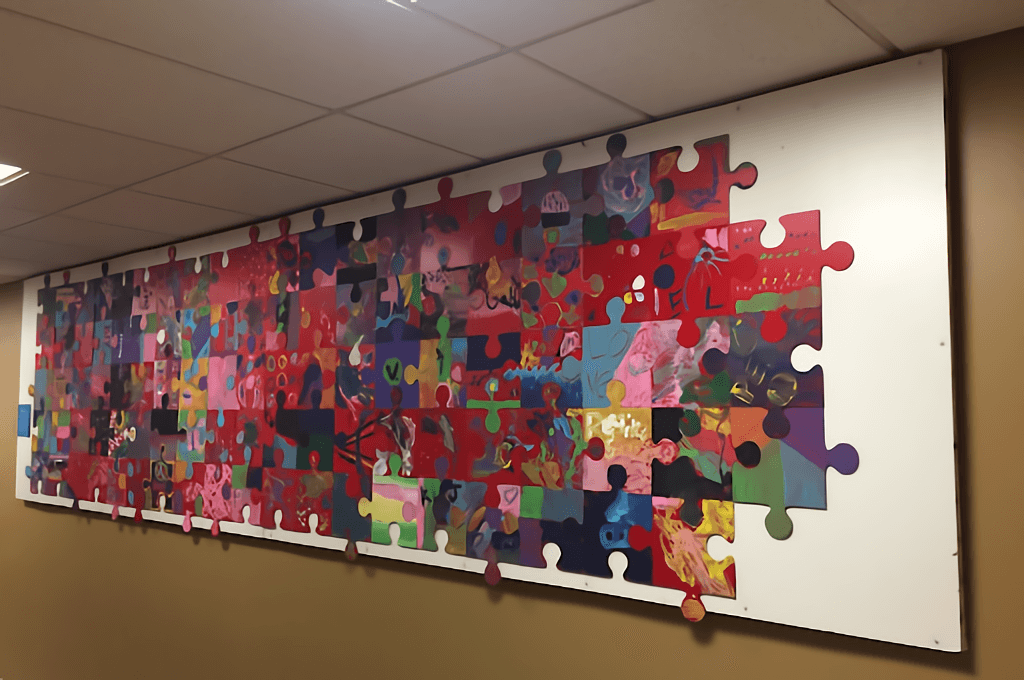
“While serving as an enjoyable experience for those community members who participated in creating the work, the objective of the Puzzle Project is to demonstrate visually that, like the unique individual pieces of a puzzle, diverse residents within a community can come together and create a single beautiful thing.” - Western Reserve Hospital, Hospital in Cuyahoga Falls, Ohio. (Western Reserve Hospital)
Community Commemorative Art May Help You:
- Give a visual story of the community learning experience, and provide a visual marker of the stories. By being visible in a public place, it can help tie the community together through shared experiences and strengthen pride, solidarity and support.
- Focus on the peace practices of creativity, courtesy and cooperation.
- Develop a sense of collective self-esteem about being a member of a diverse community.
- Create a space for someone to think, commemorate a significant emotion or experience, and collect stories with symbolic meaning.
- Provide a beacon for guests and community members, inviting curiosity and interest in the uniqueness of each community.
Risk of Not Doing This:
- Some people express themselves better in words, others express themselves using images and symbols. This activity provides an outlet for those who think and express themselves in imagery and symbolism.
Recommended Inputs:
- Story Circle topics and themes may be useful as a prompt for this activity.
- Mementos and artifacts from each community member’s home can be a great way to customize this effort. Make sure you send reminders to the participants to bring these artifacts.
What Comes Next?
- Lead a Story Circle to further explore themes and topics expressed during this activity.
- Display these artifacts to strengthen community pride, and share stories.
- Open up the prompt and digital templates to invite further contributions either online or by hosting additional sessions for different groups or at different sites.
Do’s
- Choose a topic that is reflective and prompts stories from the community. This is not an opportunity for debate, but rather a means of personal and communal expression.
- Encourage all to participate. One does not have to be an “artist” to make art. This is about expressing feelings and values, and the physical artifact serves as a marker of that expression.
- Provide enough materials for all participants.
Don’ts
- Do not require people to share. It is okay if they wish to simply add their art to the display without explanation.
- Do not hide or throw away these art pieces if you promise to display them.
References:
Acevedo, Elizabeth. “Elizabeth Acevedo performs "Rat Ode."” YouTube, 16 February 2018, https://www.youtube.com/watch?v=2-c3y3pYZ1g&ab_channel=America-TheJesuitReview. Accessed 24 November 2020.
Feen-Calligan, Holly, et al. “Art Therapy, Community Building, Activism, and Outcomes.” Frontiers in Psychology, vol. 9, 2018. Frontiers Media SA, https://www.ncbi.nlm.nih.gov/pmc/articles/PMC6176654/. Accessed 9 November 2020.
https://snccdigital.org/inside-sncc/culture-education/free-southern-theater/
https://artsandculture.google.com/exhibit/wgJy0M-5vTtQIg
Roadside Theater, https://roadside.org/archive/local-culture-driving-community-development/story-circles.
“The art of building community - Public Mosaic Projects Bring it All Together.” Mozaico, 15 October 2019, (https://blog.mozaico.com/the-art-of-building-community-public-mosaic-projects-bring-it-all-together/). Accessed 9 November 2020.
Trimboli, Oscvar. “6 proven Chinese secrets to becoming a skillful listener.” (https://www.oscartrimboli.com/6-proven-chinese-secrets-becoming-skillful-listener/). Accessed 24 November 2020.
Western Reserve Hospital. “The Puzzle Project.” Facebook, 20 September 2017, https://www.facebook.com/222699687747761/posts/introducing-our-newest-community-art-installation-located-in-the-main-lobby-hall/1841101579240889/. Accessed 24 November 2020.
